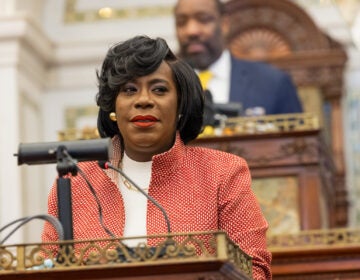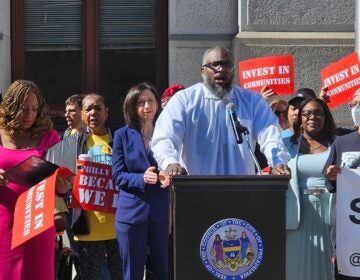A significant chunk of Philly’s CARES Act money is paying for police and prisons
Out of $276 million in initial federal COVID grants, the city appears to have allocated at least $100 million to cover staffing in the police, prisons, and fire departments.
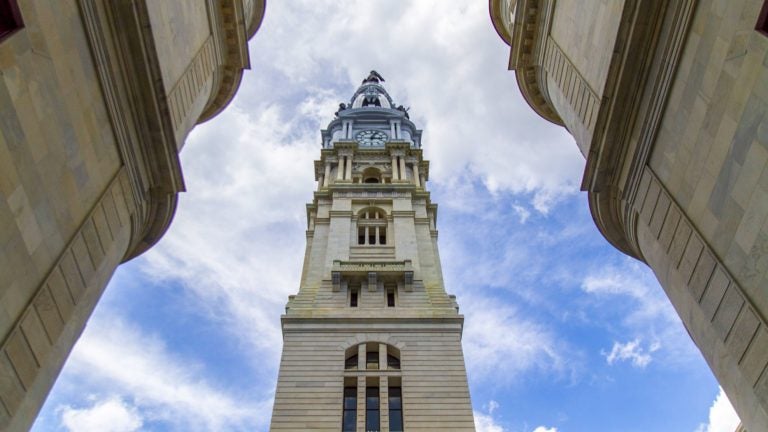
(Miguel Martinez/Billy Penn)
Upwards of a third of Philadelphia’s first round of COVID-19 pandemic relief funds appears to have been spent on staffing costs for city police, prisons, and the fire department.
A little more than $276 million came to Philadelphia last year from the U.S. Department of Treasury as part of the federal CARES Act. How the city should allocate the “Coronavirus Relief Fund” money was far from clear, as the true costs of Philly’s COVID-19 efforts are still an open question — as is the full effect of the economic downturn on the city budget.
Last October, city officials reported plans to allocate around $105 million of the relief cash to cover staffing costs for “public health and public safety.” Mayor Jim Kenney’s administration later acknowledged the oblique phrase encompassed the Philly Police Department, Fire Department, Department of Prisons, and Department of Public Health.
City officials repeatedly declined to disclose to WHYY News exactly how they arrived at that $105 million figure, or explain exactly how it was divided among the four departments.
“We developed an internal estimate, based on the federal grant guidance,” said city spokesperson Kevin Lessard. “We are not prepared to share that just yet, as we’re still assessing where best to charge various types of public health and public safety costs, both of which are still occurring.”
Allocating CARES Act relief toward a combined group of personnel costs — including benefits, overtime, and pension — is allowed under guidelines put out by the U.S. Treasury, which must approve any spending plan, so long as they are “substantially dedicated to public health and public safety efforts for COVID-19 response.”
But the flexibility comes at the price of transparency. It conceals exactly how much relief the city plans to allocate to law enforcement, for example.
Philadelphia officials have insisted since last winter that they could not answer detailed questions about planned use of CARES Act dollars. In March, former Kenney spokesperson Mike Dunn said an analysis about allocating relief money would be done by April. Instead, nearly five months later, the city still has not released these figures.
The administration eventually acknowledged it was using a “proportional” allocation system to come up with the $105 million figure: identifying costs based on the relative size of each eligible department in the city budget.
And the police, fire, and prisons departments dwarf the city’s health department in that regard. Together, all four departments’ personnel costs amount to about $1.2 billion annually, with health accounting for less than 5% of the total.
Were CARES Act spending proportionally allocated, nearly $100 million of the $105 million would flow towards law enforcement and the fire department — more than a third of the initial federal grant.
Avoiding criticism by keeping spending secret?
Other cities have attracted criticism after disclosing how much COVID-19 relief funding was earmarked for public safety, instead of public health initiatives.
Howard A. Chernick, a professor emeritus of economics at Hunter College, said the flexible nature of the CARES program combined with a police-heavy city budget meant personnel money would almost inevitably go to law enforcement, even amid public calls to reduce that funding.
“My guess is that, of the money that was flexible under the CARES Act, most probably flowed into the police budget,” he said. “And I can see why they wouldn’t want to, you know, publicize that. It’s not really a winning proposition, particularly in a diverse, contested city like Philadelphia or New York.”
Ultimately, CARES Act funding represents just a fraction of the total aid channeled to Philadelphia, following a $1.4 billion infusion this year through the American Rescue Plan that has attracted similar questions about the efficacy of planned spending.
Like many municipalities, Philly is still actively spending down its first round of relief funds, which Chernick said probably contributed to officials’ reluctance to release firm figures. However, reporting from the city indicates it has expended $236 million so far, the majority of the initial allocation. Meanwhile, other federal aid has also flowed to law enforcement.
The PPD saw overtime costs jump 27% in fiscal year 2020, including some expenses that weren’t necessarily connected to the pandemic, like outfitting more officers with Tasers.
A separate $2 million of CARES Act funding was given directly to the Police Department, according to Dunn, the former city spokesperson, largely to cover overtime costs and the purchase of personal protective equipment or other supplies. The U.S. Department of Justice also allocated another $4.8 million in supplemental funding for the Philadelphia police for PPE and cleaning supplies.
City officials repeatedly noted that some job classes were eligible for multiple federal grants, and that some expenses might still be reclassified later on. They now assert they cannot disclose any more details on personnel reimbursements until after the federal window for CARES Act spending closes –– effectively pushing the information release into 202
The city reiterated that’s because it is still deciding how to code ongoing expenses. “We’re following federal guidance to that end and it wouldn’t make financial sense for us to lock in those allocations now,” spokesperson Lessard said last month.
Chernick, the Hunter professor emeritus, said that while allowing COVID-battered municipalities some flexibility in tapping relief funds was a good thing, the issue of transparency is also critical.
“The issue is, when extra money comes in,” Chernick said, “there will be a tendency to use it to cover some of the deep deficits that they have historically incurred.”

Get daily updates from WHYY News!
WHYY is your source for fact-based, in-depth journalism and information. As a nonprofit organization, we rely on financial support from readers like you. Please give today.


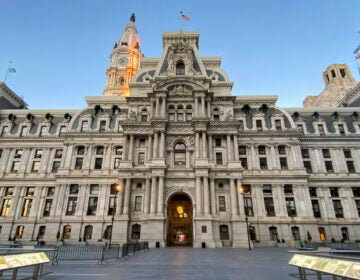
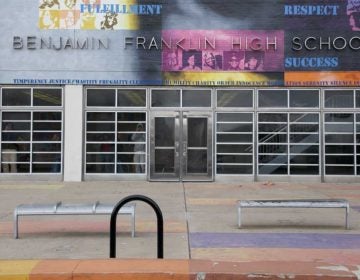
![CoronavirusPandemic_1024x512[1]](https://whyy.org/wp-content/uploads/2020/03/CoronavirusPandemic_1024x5121-300x150.jpg)
